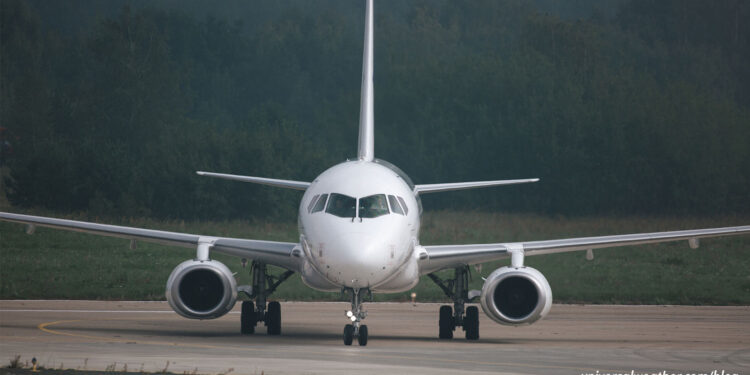Aviation Weather Issues – Fog – Part 3: Dealing with Fog

This business aviation blog post continues from our article last week, titled “Aviation Weather Issues – Fog – Part 2: Impact of Fog.“
There are a number of weather resources available to flight crew to indicate current and predicted fog conditions. It’s always important for crews to have a basic understanding of the various means of predicting fog and how this information is portrayed on charts and weather briefs. This will help you form your plan for how you are going to deal with a fog event that impacts your flight.
The following is an overview of what you need to know:
1. Impact on flight – airport alternates may be needed
Fog can be both a safety and cost issue for aircrews. The following information is from the Federal Aviation Authority (FAA) website; a five year study 2003-2007 of aviation accidents by the U.S. National Transportation Safety Board (NTSB), found that visibility/ceiling was the second largest cause or contributing factor in weather-related accidents. It was the leading weather-related accident category in Part 135 operations, with 46 citations. Visibility/ceiling ranked second on the list of causes or contributing factors in Part 91 operations and accounted for 350 of 1,960 total weather-related citations (17.8 percent).
It’s important to note that national air traffic services may require designated alternate destinations, on dispatch releases, if the destination airport’s observed, or forecast, ceilings and visibility are less than 600 meters (2000 feet [ft.]) and/or 4800 m (3 miles [mi]) within one hour either side of the estimated time of arrival (ETA). Once it’s determined that an alternate is necessary, aircrews must select an airport that meets alternate minima requirements. These minima are usually 120 m (400 ft.) and 1600 m (1 mi) or 180 m (600 ft.) and 3200 m (2 mi). Be aware, however, that smaller airports may require more stringent minima of 240 m (800 ft.) and 3200 m (2 mi) or even 300 m (1000 ft.) and 4800 m (3 mi). Whenever alternates are required, regulations specify that additional fuel be carried to fly to, and attempt to land at, the destination airport and then fly to, and land at, the most distant alternate airport. These requirements can add significant cost and time to a trip.
2. Diversions due to fog
The decision to divert may not be made until the aircraft is on approach to an airfield. It’s always important to have suitable alternates available prior to any decision to divert. Keep in mind that fog depth and thickness may be transient and can vary greatly at certain times. Good weather briefs, or preliminary weather reports obtained prior to operation, are excellent sources for anticipating fog events. If fog is persistent operators may have to adjust schedules to work around fog situations.
3. Fog depiction on weather briefs and charts
Fog forecasts are in the TAF section of a weather brief and are also noted in weather depictions and surface forecast charts. Refer to the runway visual range (RVR) section of METARs to confirm actual reported runway visibility. Note, however, that most of the surface visibility indicated on METARs differs from RVR. Additionally, crews should also refer to area forecasts and AIRMETs, issued by the National Weather Service. Weather depiction charts are always a good reference for areas of fog and stratus. Look for shaded areas indicating areas of instrument flight rules (IFR). Surface and low level prognosis charts can also be referred to for indications of areas of fog/low cloud.
4. Obtaining fog images
Satellite imagery is an excellent tool to forecast potential fog formation, or areas where fog is prevalent. During nighttime the 3.9/10.7 micrometer channel difference (fog product) can be used to depict presence of fog or low level stratus. During daytime visual satellite imagery is also a preferred tool for depicting areas of fog/low clouds. While rough estimates of fog depth and extent can be determined by Infra Red (IR) channel differences surface and sounding reports remain preferred indicators of actual fog depth. In the absence of correlating surface reports, however, IR imagery is always an effective tool.
5. Additional information on fog
The NOAA Aviation Weather Center website provides in depth information on fog and stratus development. Your service provider’s website may also supply additional useful information tailored to your specific operations.
6. Additional reading: Aviation Weather Issues – Fog Series Index
Note: Links will be updated as articles are published.
Conclusion
Crews need to be aware of and be prepared of existing and projected fog conditions. Presence of fog is based on local weather conditions, geography and season of the year. If you’re operating to a fog prone area it’s always best to obtain a preliminary weather brief. This will assist in scheduling flights to allow for the most cost effective operation, with minimum weather delay potential.
Questions?
If you have any questions about this article, or would like assistance with weather planning, contact me at stevearbogast@univ-wea.com.



